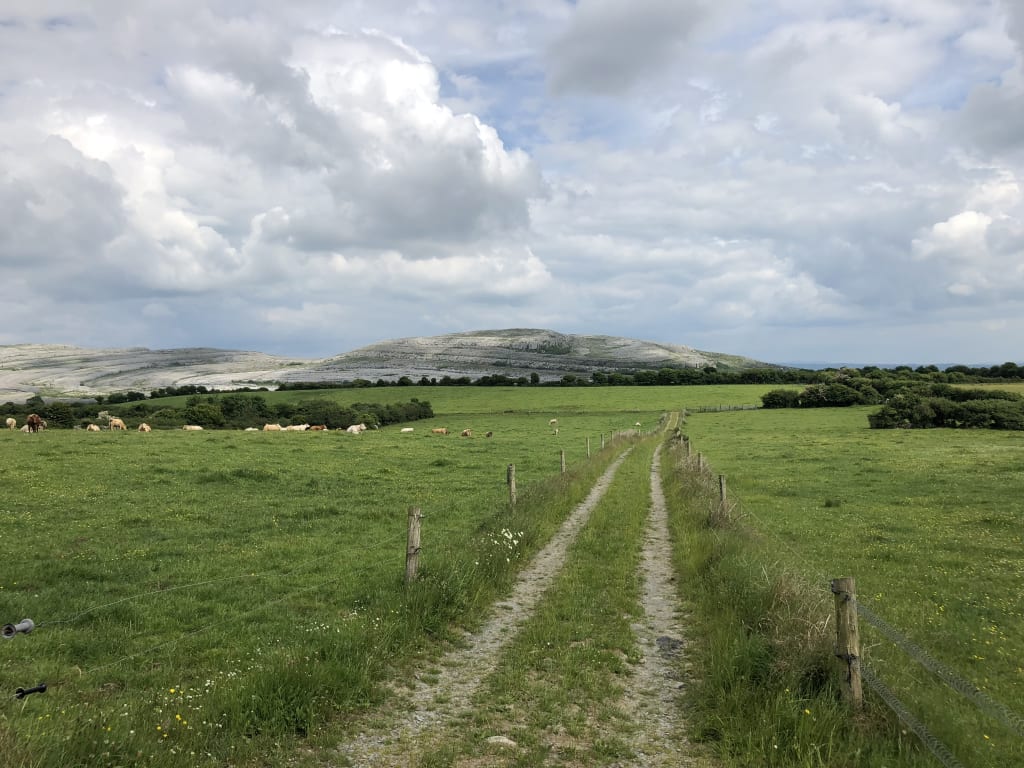Behind the Wheel in Ireland
Driving Tips for Emerald Isle Wanderers

In recent years, Ireland has become a hot travel destination. It is a unique taste of Europe, known for its pub culture, live music, historic castles, and stunning natural beauty. Best of all, it has become easily accessible via direct flights from New York, Boston, Chicago, and even a few smaller cities on the eastern seaboard.
If you’re looking to just hit the highlights, a tour bus charter is the way to go. You’ll be on a tight schedule, but you’ll still be able to get a taste of the local cuisine, take a few photos from the parking lot, and say that you were there. However, if you’re looking for a unique, immersive experience, driving Ireland is the way to go. Here’s a few things to know before you go:
Renting a Car
There are at least a dozen rental car companies located in the Dublin airport. It’s important to shop around and book ahead of time to lock in the best price. Make sure that you have something in writing to confirm your booking. Often, the companies will verbally confirm or assure you that your reservation is in their system, but get a receipt with all the details to be positive. Advertised pricing can be insanely cheap in Ireland (I’ve seen as low as $10 a day!), however, this does not include insurance and other hidden fees. Visa offers driver’s insurance for travelers, but it excludes both Ireland and Northern Ireland, so, generally, you’ll be stuck paying for insurance through the rental company if your personal insurance company won’t cover you abroad (expect to pay at least $500 more). Hidden fees are everywhere, so be mindful. There is usually a charge if you’re looking to go to Northern Ireland (though you can pass the border without even realizing it).
If you’re a driver under 25 then your options are more limited. Dooley and Sixt both have a limited number of rental cars available for drivers under 25, but they’re usually a bit more expensive. Shop around, book ahead, get confirmation, and don’t be surprised if you get charged for random fees you didn’t know about.
When you arrive to pick up your car, make sure to take photos of the vehicle. Ireland is known for its narrow roads, made narrower by tall hedges. It’s not uncommon to see scratches on the left (passenger side) mirror, tires, or fenders. Check the windshield, the bumpers, and the upholstery and take pictures of any damage. Assure that the photos are time/date stamped. This will give you a visual record and help you avoid added costs when you return the car.
Driving Basics
In Ireland, traffic drives on the left side of the road. For Americans, this can be an intimidating transition. At intersections, you will be crossing traffic when turning right, which can be disorienting. At traffic circles or roundabouts, which are more common in Ireland, the traffic will be traveling clockwise. Traffic already in the roundabout always has the right of way. Take your time and assure yourself that you’re on the correct side of the road and going in the proper direction.
Steering wheels in Ireland are often on the right side of the car (there are certain RVs and vans with the steering wheel on the left). This, combined with the fact that you’re driving on the left side of the road, will put the driver on the centerline. This can be daunting on a narrow road with traffic, but just focus on the road in front of you and not the car heading your way or the hedge on the side. Take your time and don’t be afraid to pull off to the side to let another motorist pass.
Most rental cars in Ireland are standard (manual) transmission. This is important to note as the shifter will be on your left side. If you’re comfortable with manual transmissions, you’ll catch on quickly and truly enjoy yourself. If you’re not as familiar with manual transmissions, try to orient yourself before crossing the pond.
In the Republic of Ireland, speed limits will be displayed in Kilometers/Hour. In Northern Ireland, speed limits will be displayed in Miles/Hour. However, speedometers in many rental cars will only display the speed in kilometers/hour, so be cognizant if you’re crossing the border (again, there is no border, no customs, and on some country roads, not even a sign telling you that you’re in a different country).
The Ireland Driving Experience
Driving in Ireland was a memorable, exhilarating experience. As stated above, the roads are very narrow, with little to no shoulder. They are also hemmed in by tall hedges, making them seem even thinner than they are. Roads will twist and curve, sometimes without warning. In the US, roads of this nature would generally be marked with a 25 to 35 mph speed limit. In Ireland, these roads will have speed limits of 80-100 kmh (or about 50-62 mph). Don’t be afraid to go well below the speed limit, particularly when you’re first getting used to driving on the left side of the road/right side of the car. Even if you do manage to get up to the speed limit, don’t be surprised if you get passed by locals at excessive speeds, at any time.
Be careful of lorries (trucks), tour buses, and RVs. Slow down and pull over as far as possible (put your wing mirror in the hedge if you have to), especially on curves. Tractors are also a common sight on the road, be careful when passing them. Finally, it’s not uncommon to find livestock grazing on the side of the road or crossing without warning. Sheep especially like to lounge roadside.
The Hot Roads
Ireland has numerous roads that are must drives, particularly on the west side of the country. The Wild Atlantic Way, which is well marked and well trafficked (though still quiet enough to be enjoyable) is arguably the best route to follow. It runs along drastic rock cliffs, secluded beaches, and vibrant towns of various sizes.
Starting at Kinsale on the southern coast, make sure to explore off the main road. You’ll find a plethora of quaint, maritime villages and wayside cafes.
Further north is N71 between Bantry and Kenmare where you’ll traverse the rocky Caha Pass and drive through stone tunnels straight out of a car commercial.
The Ring of Kerry should be explored in its entirety. N70 winds through the mountains along the coast and include stunning views of Scariff Island and Great Skellig (of Star Wars fame). Inland in the Ring of Kerry is Killarney National Park and the Gap of Dunloe, an insane road made more for horses and pedestrians than cars.
N67 runs along Ireland’s Cliff Coast, with sparkling ocean vistas, rolling farmland, and the legendary Cliffs of Moher.
Further from the coast, one will find the Burren National Park, which is a bit off the beaten path but features otherworldly views of barren limestone hills, lakes, and cliffs.
Still further north along the coast is Achill Island, where you can take R319 to Keem Bay, a hidden beach with crystal clear waters and sweeping views.
While these are just a few highlights, when driving in another country you quickly realize that the ordinary becomes extraordinary, and some of the best adventures can be found wandering the average country road. So ditch the tour bus, hop behind the wheel, and let the Emerald Isle experience open up to you.
About the Creator
Jordan Long
Jordan Long is a writer, pilot, and adventure enthusiast living in Phoenix, Arizona. He blogs about travel, hiking, skiing, flying, the arts, the environment, and everything in between.






Comments
There are no comments for this story
Be the first to respond and start the conversation.